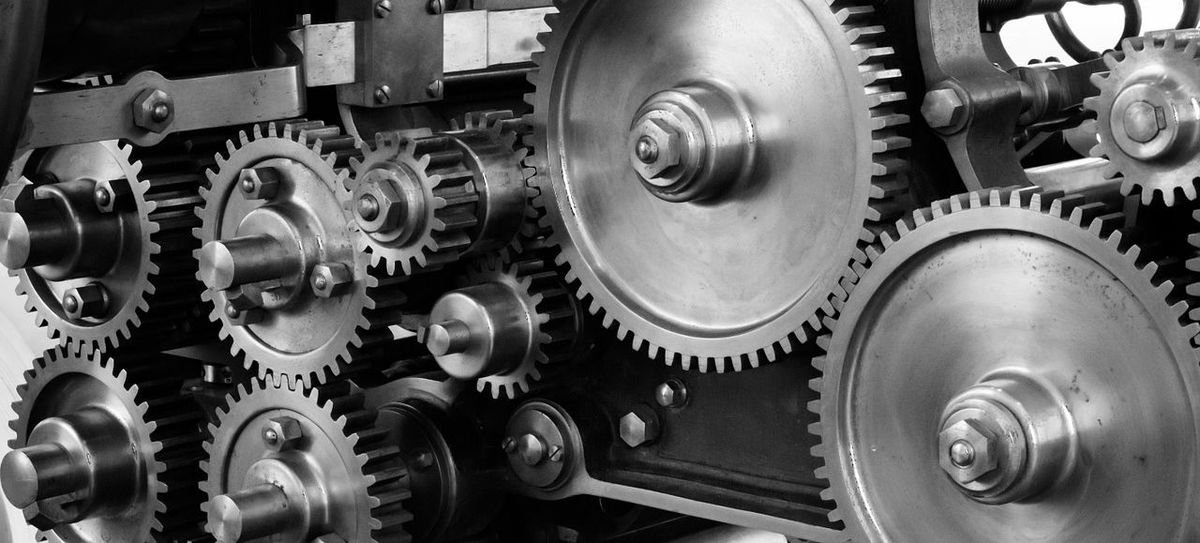Smart maintenance - electronically supported maintenance!

The weaknesses and solutions of smart maintenance - electronically supported maintenance - in Industry 4.0
Close interlinking required
Experts agree that the MES (manufacturing execution system) and maintenance must be closely interlinked with predictive analytics - which is, after all, the essence of electronically supported maintenance.
Specialists such as Klaus Thiel of MES Consult and Dr. Olaf Sauer of the Fraunhofer Institute of Optronics, System Technologies and Image Analysis IOSB, have demonstrated this requirement in various publications ¹.
Systems are therefore needed that are capable of anticipating a possible failure due to wear and tear or the like. Peter Pauls from InQu Informatics states: "Maintenance is an important subject in the context of an MES solution" ².
The weaknesses of predictive maintenance
In general, it can be stated that there is no universal method or tool that offers the highest level of security in predictive maintenance.
In this area Dr. Sauer notes that a lot of experimentation with pilot projects is currently taking place - but that there is often a lack of reliable sensor technology to use analytics in a target-oriented manner.
So as long as it is not possible to predict breakdowns in the production process caused by failures and wear with absolute certainty, the other elements that are active in this context have to guarantee maximum reliability.
The topic of preventive maintenance - as it has been practised since time immemorial - is of outstanding importance here. In fact, the so-called “C-products” of preventive maintenance (cleaning agents and lubricants) are essential factors that have a direct impact on production reliability.
Criteria for the maintenance products used
The quality of the cleaning and lubrication products needs to be at a particularly high level, since there is always the risk that the electronic systems of the MES will be unable to determine the exact time for maintenance with absolute certainty. If the worst comes to the worst, the maintenance products used must have sufficient reserve capacity to ensure - even over an extended period - the full functionality of the production machines.
In this context 3 criteria should be mentioned:
1. Maintenance products should be able to clean, lubricate and protect in one operation. (Effective lubrication is always preceded by thorough cleaning.)
2. They should be synthetic products, because these do not age or gum up. (A long-lasting lubrication effect without resinification!)
3. They should be lubricants with additives that produce a dry, well-lubricated surface. (Dry surfaces stay clean longer because, unlike oily agents, they do not attract dust!)
Learn more about our groundbreaking, sustainable and innovative solutions with the innotech tricomplex-Technology® and innofluid® additive technology.
Sources: ¹ and ² “Instandhaltung”, Issue 2/2019
The key terms of "smart maintenance" (electronically supported maintenance) and "Industry 4.0" don't just refer to forward-looking technical developments. Electronically supported maintenance also intervenes directly in the production process. For this reason, special attention must be paid here to the reliability of all the components involved.
Close interlinking required
Experts agree that the MES (manufacturing execution system) and maintenance must be closely interlinked with predictive analytics - which is, after all, the essence of electronically supported maintenance.
Specialists such as Klaus Thiel of MES Consult and Dr. Olaf Sauer of the Fraunhofer Institute of Optronics, System Technologies and Image Analysis IOSB, have demonstrated this requirement in various publications ¹.
Systems are therefore needed that are capable of anticipating a possible failure due to wear and tear or the like. Peter Pauls from InQu Informatics states: "Maintenance is an important subject in the context of an MES solution" ².
The weaknesses of predictive maintenance
In general, it can be stated that there is no universal method or tool that offers the highest level of security in predictive maintenance.
In this area Dr. Sauer notes that a lot of experimentation with pilot projects is currently taking place - but that there is often a lack of reliable sensor technology to use analytics in a target-oriented manner.
So as long as it is not possible to predict breakdowns in the production process caused by failures and wear with absolute certainty, the other elements that are active in this context have to guarantee maximum reliability.
The topic of preventive maintenance - as it has been practised since time immemorial - is of outstanding importance here. In fact, the so-called “C-products” of preventive maintenance (cleaning agents and lubricants) are essential factors that have a direct impact on production reliability.
Criteria for the maintenance products used
The quality of the cleaning and lubrication products needs to be at a particularly high level, since there is always the risk that the electronic systems of the MES will be unable to determine the exact time for maintenance with absolute certainty. If the worst comes to the worst, the maintenance products used must have sufficient reserve capacity to ensure - even over an extended period - the full functionality of the production machines.
In this context 3 criteria should be mentioned:
1. Maintenance products should be able to clean, lubricate and protect in one operation. (Effective lubrication is always preceded by thorough cleaning.)
2. They should be synthetic products, because these do not age or gum up. (A long-lasting lubrication effect without resinification!)
3. They should be lubricants with additives that produce a dry, well-lubricated surface. (Dry surfaces stay clean longer because, unlike oily agents, they do not attract dust!)
Learn more about our groundbreaking, sustainable and innovative solutions with the innotech tricomplex-Technology® and innofluid® additive technology.
Sources: ¹ and ² “Instandhaltung”, Issue 2/2019







